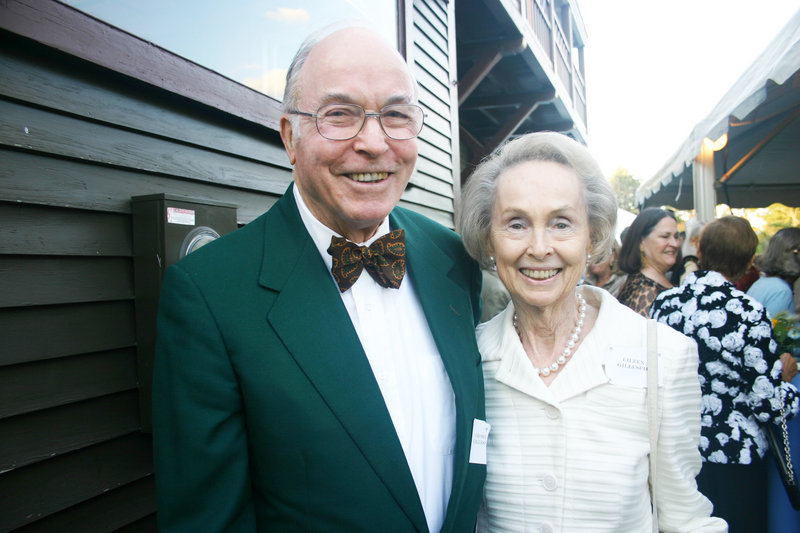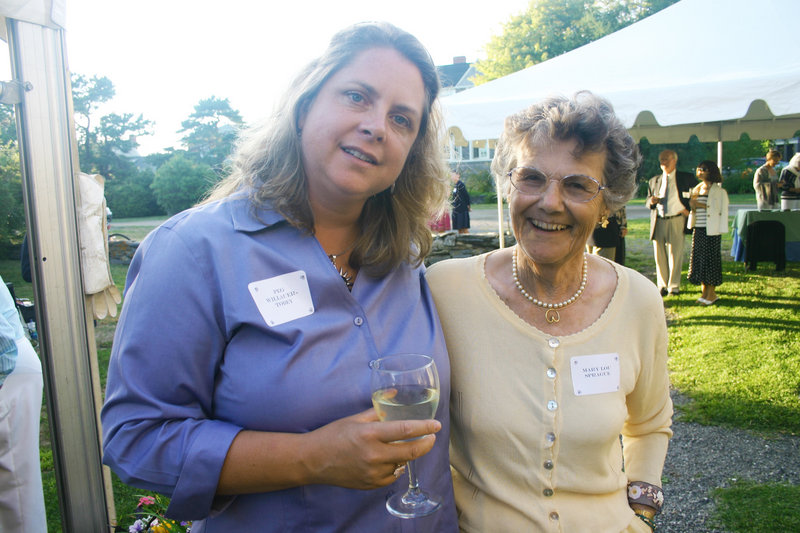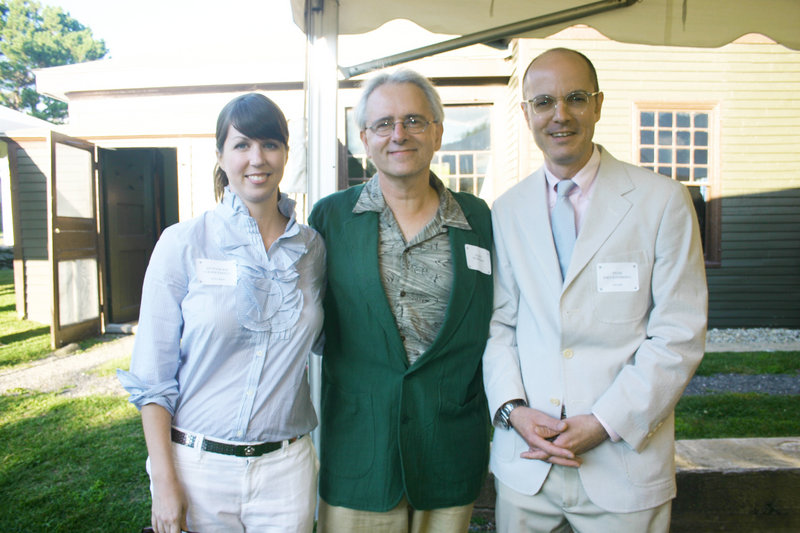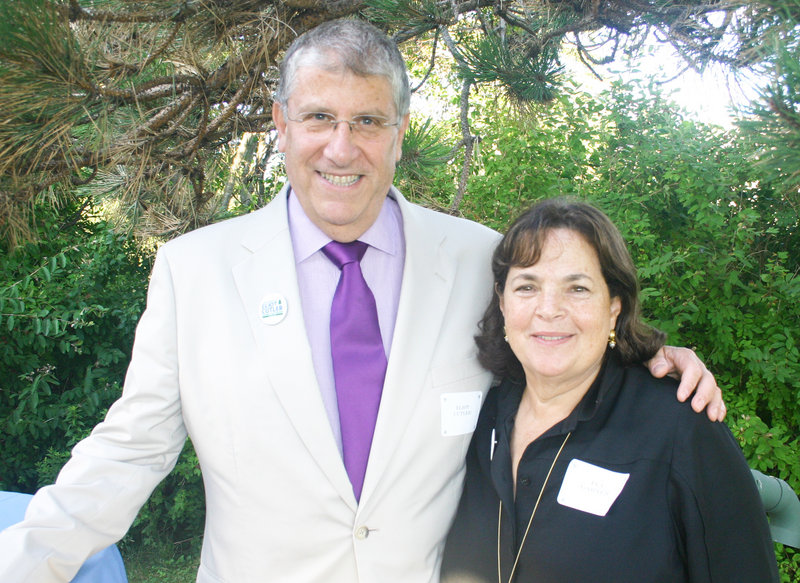We were treading on sacred artistic ground during the July 30 party at the Winslow Homer Studio on Prouts Neck. More than 300 of the Portland Museum of Art’s top supporters had a chance to sip cocktails in the sparkling seaside sunlight and explore the cottage where the celebrated American artist painted from 1883 until his death in 1910. The party’s honorary hosts were George and Eileen Gillespie, who have a home near the studio.
Part of the Winslow Homer Weekend festivities marking the centennial of the artist’s death, the affair coincided with an ongoing Homer show at the museum and was followed the next day by a scholarly symposium and a gala dinner.
The studio, which the museum acquired from Homer’s great-grandnephew Charles Homer “Chip” Willauer in 2006, is in the midst of an extensive restoration intended to bring the structure back to the way it appeared in the last 10 years of Homer’s life. It is not yet available to the public, but plans call for it to open for guided tours in September 2012.
Despite the current stripped down state inside the cozy cottage, Homer’s spirit lingers if you look closely.
On an original window pane in the former library, his signature can be seen etched into the glass. And in the living room, a sharp eye can pick out the lines of poetry he scribbled on the wooden wall.
This persistent sense of Homer’s presence is as it should be, since he passed away inside his beloved studio.
“There is a myth that he was a hermit,” the museum’s public relations director Kristen Levesque told me. “But there were eight hotels here (when he was alive) and it was a lively summer community.”
In order to complete the restoration and open the studio to guided tours, the museum needs to raise $10.5 million. The fundraising campaign is more than halfway to this goal.
“It’s kind of reminiscent to me of the Olson House,” Donna McNeil, director of the Maine Arts Commission, told me. “It’s part of a tradition that you take your archtype artist and you purchase their studio. For that reason alone, it’s important for the museum to have.”
McNeil went on to point out the influential role Homer has played in the museum over the years. Homer first exhibited his work at the museum’s precursor, the Portland Society of Art, in 1893. Years later, in 1976, Maine native and philanthropist Charles Shipman Payson, who passed away in 1985, donated an outstanding collection of Homer’s works to the museum along with $8 million to build an addition to house the collection. This addition became the public face of the museum.
“You look at the art and it’s beautiful,” art supporter Elizabeth Astor said to me. “But when you look at the studio, it gives you the sense of the person.”
Like all of us here in Maine, Homer was a person deeply influenced by our state’s rugged and romantic landscape. His life at Prouts Neck not only influenced his art, it shaped his career.
Writing recently for “Down East,” Edgar Allen Beem said the world would not remember Winslow Homer as “the greatest American artist of the nineteenth century, had he not moved to Maine in 1883.”
When I had a chance to chat with Marc Simpson, a lecturer in art history at Williams College and one of the symposium speakers, he confirmed Homer’s importance by saying definitively, “Winslow Homer is one of the greatest American artists.”
His talk the following day explored how scholars measure such artistic prominence. Ahead of his presentation, Simpson surveyed 30 art history texts published from 1905 to 2008 and catalogued which Homer images were used and when. And while academic appreciation for Homer hasn’t waned, the appeal of particular works constantly morphs to mirror the ever fickle tide of cultural trends.
“I’m looking at what’s in fashion,” Simpson told me. “It changes dramatically.”
During his remarks to the crowd, museum director Mark Bessire mused about the role of our state in the nation’s artistic psyche.
“Why is Maine so important?” he asked and then provided an answer. “It’s an authentic experience. Maine doesn’t seem to shift and change, although it’s very progressive.
“What we need to do is to preserve and restore this studio,” Bessire continued. “For the next generation of Maine will have this to explore and not have to look at it on a computer.”
As those who attended the party can no doubt attest, there is something magical about standing where an American master once stood and watching the scenery he made famous churn before your eyes.
George Gillespie said it best, when he told the guests: “These views constantly remind us of Homer’s genius.”
SEND PARTY INVITES to Avery Yale Kamila, Maine Sunday Telegram, One City Center, 5th Floor, Portland, ME 04101. Or contact her at 791-6297 or akamila@pressherald.com.
Keep up with the party scene by reading her Society Snapshots blog at www.pressherald.com/blogs/kamila.
Send questions/comments to the editors.






Success. Please wait for the page to reload. If the page does not reload within 5 seconds, please refresh the page.
Enter your email and password to access comments.
Hi, to comment on stories you must . This profile is in addition to your subscription and website login.
Already have a commenting profile? .
Invalid username/password.
Please check your email to confirm and complete your registration.
Only subscribers are eligible to post comments. Please subscribe or login first for digital access. Here’s why.
Use the form below to reset your password. When you've submitted your account email, we will send an email with a reset code.